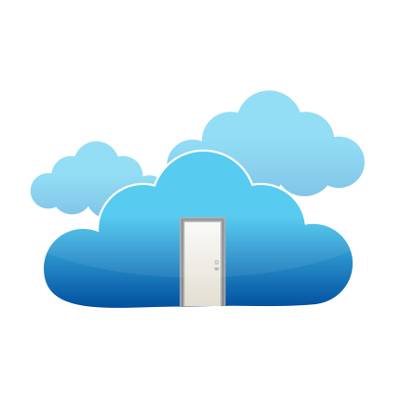Virtualization is changing the way that businesses access information, to the point where many organizations simply choose to store their data infrastructure in the cloud and access it as needed. While this is extremely convenient and helps to keep your in-house wiring to a minimum, it also puts you at the mercy of your business’s Internet connection. You don’t need us to tell you that this is a precarious situation to be in, and the slightest Internet hiccup could cause a world of trouble.
Macro Systems Blog
So, you’re convinced that cloud computing is the new way to go for your company. That’s great, and it’s an easy choice to make, seeing as the cloud affords organizations benefits such as increased productivity, improved collaboration, anytime/anywhere access, and much more. Now that you’ve decided to go with the cloud, what’s your next move as far as making this a reality?
Hardware refreshes are often a time of great turmoil for businesses, particularly because of the cost of new servers and the time it takes to migrate data from one location to another. Thankfully, with the advent of virtualized servers, businesses have a viable alternative to the outright purchase of expensive, new hardware solutions. Instead, a virtual server that’s hosted in the cloud offers not only a more immediate reprieve, but can also significantly reduce costs for your organization in the long run.
If your business is still on the fence about the cloud, you should make up your mind soon. The cloud is an investment that can help your business improve operations, cut costs, and boost productivity. It’s inevitable that most businesses will use the cloud, so it’s not a question of if, but when. Why not take this opportunity to get a head start on your competition with a cloud computing solution?
The cloud makes operations more efficient and can save you plenty of capital in the long run, which is why many organizations are turning to it to further improve the way they do business. Yet, businesses that haven’t moved to the cloud will face steep competition from those that have. If you’re still not sure whether the cloud is right for your business, consider the following advantages of cloud computing for SMBs.
For business owners looking to streamline operations and get the most out of their technology, a new survey by TSO Logic analyzed 10,000 customer physical servers and 25,000 virtual machines and concluded that 45 percent of existing VMs would run more efficiently in the cloud. A finding like this should be reason enough for companies to reevaluate their current IT setup.
A connectivity to the cloud is a great opportunity that your organization can leverage to its advantage, but only if it’s done well. No two businesses will have the same exact configuration when it comes to cloud, as the needs and responsibilities that are accomplished through that cloud solution will change. This week’s tip is dedicated to helping you discover which cloud solution is right for you.
For businesses everywhere, technology is a necessity to reach their goals, which are of course influenced by the technology that companies are able to access. For this cycle to continue, a business needs to establish what is expected to come next in the line of IT innovation. It seems companies are currently placing convenience as a priority.
For the modern business world, technology is imperative. These days there is a monumental shift in the way organizations' of all sizes grab hold of the computing resources necessary to succeed. As cloud-based solutions continue to offer businesses new computing options, there is a hosted solution that sticks out in the crowd for the value it presents: file sharing.
If you’re like most small businesses, chances are that you have one or two servers in your office that are dedicated to storing and distributing data on your in-house network. Without these machines, you would be in a rough spot. Users wouldn’t be able to access data and your operations would suffer. But what if we told you that there is an easier way to manage data and increase user accessibility that doesn’t include managing server hardware?
Cloud computing offers businesses an economical way to obtain the software and services they need. Yet, there comes a point when having too much of a good thing becomes wasteful, no matter how affordable the service may be. If a business owner isn’t careful about how they utilize the cloud, then they can unknowingly find themselves experiencing “cloud waste.”
Are you still hesitant to adopt cloud computing for your company’s IT needs? For the cautious business owner, adopting new technologies isn’t a move that’s to be made lightly. However, cloud computing is much more than a passing fad. In recent years, the cloud has become such a reliable and efficient tool for businesses that it deserves your attention. Take for example these three misconceptions about the cloud.
The cloud has seen explosive use of its services and solutions since it was first introduced, and for good reason--it offers benefits that are too useful for a business to pass up. These benefits vary, but all serve a singular purpose: to make the user’s experience easier. Here are some of the ways that the cloud can enhance the daily operations of your business.
 One of the greatest advances in technology solutions to have emerged in the past few years is cloud computing. In fact, it’s one of the most popular Software as a Service (SaaS) platforms out there for the modern business. Are you prepared to commit to a cloud solution that can potentially improve productivity on all levels of your business infrastructure?
One of the greatest advances in technology solutions to have emerged in the past few years is cloud computing. In fact, it’s one of the most popular Software as a Service (SaaS) platforms out there for the modern business. Are you prepared to commit to a cloud solution that can potentially improve productivity on all levels of your business infrastructure?
 The modern business world is constantly evolving, and one of the revolutions that have allowed for this is virtualization. You might have heard about server virtualization or even desktop virtualization. Did you know that you can virtualize your applications, too? In fact, it can be one of the most valuable uses for virtualization, especially considering the upcoming Windows Server 2003 end-of-support date.
The modern business world is constantly evolving, and one of the revolutions that have allowed for this is virtualization. You might have heard about server virtualization or even desktop virtualization. Did you know that you can virtualize your applications, too? In fact, it can be one of the most valuable uses for virtualization, especially considering the upcoming Windows Server 2003 end-of-support date.
 Cloud computing is a revolution which is bringing about a change in the way small businesses view the consumption and analysis of data. More businesses than ever before have joined the cloud trend. However, some are finding that their cloud solution isn’t ideal, or they have presumptions about the cloud that simply aren’t true.
Cloud computing is a revolution which is bringing about a change in the way small businesses view the consumption and analysis of data. More businesses than ever before have joined the cloud trend. However, some are finding that their cloud solution isn’t ideal, or they have presumptions about the cloud that simply aren’t true.




















